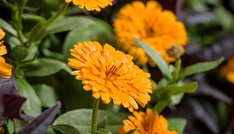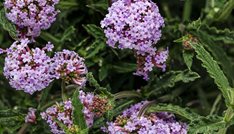Choosing Plants


While there are many plants that will attract butterflies, it also important to choose that are dense in nutrients for the butterflies. This relationship between butterflies and plants that are the most nutritious for them has evolved over thousands of years to best ensure their survival. Therefore, the kinds of plants that support particular butterfly species can be limited and vary by region.

Include plants that will support butterflies throughout their life cycle. Flowering nectar plants offer food and energy for adults, while the leaves of larval plants such as parsley and milkweed nourish growing caterpillars. Plants that provide both nectar sources for butterflies and caterpillar food are especially valuable for smaller spaces
Variety Is Good!
Choose a mix of trees, shrubs, perennials, and annuals. Create layers for butterflies to discover nectar sources at different levels.
Some butterflies like to get their nectar high above the ground, while others prefer ground level.

Make sure to plant some plants native to your area (Raleigh is in Zone 7). These plants are more likely to be plants that the butterflies in your region are accustomed to.
Choose flowering plants that bloom at different times throughout the growing season, especially in mid to late summer when butterflies are most active. Include fall bloomers such as aster, goldenrod, and Joe Pye weed to support migrating monarch butterflies.
And last, but certainly not least plant for color! Butterflies are most attracted to flowers in colors of pink, red, orange, white, yellow, and purple.
Here are some great picks for you!!!
-

Cinderella Milkweed -

Pink Crush Aster -

Curly Parsley Flowers -

Pardon My Cerise Bee Balm -

Arizona Sandstone Hyssop -

Magellan Scarlet Zinnia -

Suncredible Sunflower -

Lady Godiva Marigold -

Crystal Blue Salvia -

Garden Girls Cover Girl Phlox -

Spoonful of Sugar Daisy -

Purple Alyssum -

Sunstar Red Pentas -

Lucious Berry Blend Lantana -

Meteor Shower Verbena -

Cat’s Meow Catmint -

Arizona Apricot Blanket Flower -

Pride and Joy Sedum -

Lavender Sweet Romance -

Firefly Sunshine Yarrow -

Blueberry Sundae Baptista -

Pow Wow Wildberry Coneflower -

Miss Molly Butterfly Bush -

Goldsturm Black Eyed Susan

























